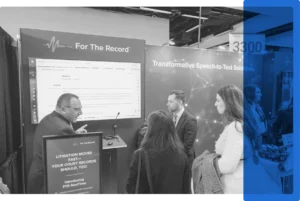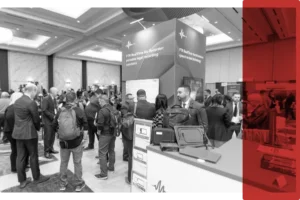History
History of the digital court record—and For The Record’s role in its modernization.
Stone carvings gave way to paper. Pen gave way to typewriters. Typewriters to stenograph machines.
And, just as Moore’s Law predicted the ongoing exponential expansion of technology’s capabilities, For The Record has led the way, consistently accelerating the pace of digital court reporting transformation.
At For The Record, we have been identifying, investigating, mitigating, and overcoming risks to the justice and legal systems with our patented and proprietary digital solutions for three decades. We set precedents.
For The Record was the first company in the world to create an electronic courtroom (in Australia in the early 1990s). Since then, we have continued to pave the way for modernized courtrooms around the globe, delivering innovations that go on to become industry standards. Above all, For The Record draws on the traditions of the past to support the justice system into its digital future.
-
1888
The shorthand soon to be used in US courts is created by Irishman John Robert Gregg
-
1899
USA’s National Shorthand Reporters Association (NSRA) formed
-
1910
Inventor Ward Stone patents the first stenotype machine
-
1940
Stenographic reporting introduced in courts
-
1960
Tape-based recording in use (and still used in some jurisdictions today)
-
1990
NSRA changes name to National Court Reporters Association (reflecting increasing use of taped recordings for transcription)
-
1993
Digital Technologies becomes FTR, a new business listed on the Australian Stock Exchange
-
1994–1997
World’s first high-tech e-courtroom (for Australia’s Wood Royal Commission into NSW Police Corruption) created and installed by For The Record’s Tony Douglass
-
1995
For The Record’s multiroom e-court adopted by courts in Washington DC, Hong Kong, Queensland (Australia), and Singapore
-
1998
FTR Gold 1.1 introduced to capture the record in courtrooms, setting the standard in digital audio recording
-
2000
Early digital recording systems used more widely
-
2003
First digital video recording software introduced into courtrooms with FTR Gold 3.1
-
2005–2011
World’s first online court-record playback library delivered by For The Record
World’s first live-recording distribution tool for courts released by For The Record
Same-day certified transcript delivery realised with For The Record’s streaming and transcription platform (precursor to Transcript Express)
-
2009
COSCA report recommends courts move to digital recording for all except specific capital criminal and civil trials
-
2010
FTR Gold software now installed in 22,500 courtrooms across North America, representing more than 50% of the digital court recording market
-
2013
National Centre for State Courts releases landmark recommendations paper, Making the Record: Utilizing Digital Electronic Recording, after inviting For The Record to advise and contribute on technology procedures and best practices
-
2013–2016
R&D collaboration with Queensland University of Technology leads to patent for For The Record’s AI multi-speaker identification technology for court recordings
-
2015
High-definition (HD) audio and video introduced with FTR Gold 5.7
-
2016
For The Record’s Smart Audio processing introduced, delivering recording outcomes better than human hearing
-
2017
For The Record’s Transcript Express platform used in real-world courtrooms in the US, Canada, and the UK, delivering faster transcripts and reducing burden on court administration
-
2020
COVID-19 shuts courtrooms globally; For The Record Virtual Recorder, used in conjunction with Microsoft Teams, allows many to re-open for remote hearings during pandemic restrictions
For The Record develops first Microsoft Teams-based, virtual-court management solution, Digital Justice, for Maricopa County Superior Court
-
2021
For The Record integrates additional cloud security and access with wider release of Cloud Platform Solutions, including Recording Vault, Speech-to-Text, and Transcript Express—delivering groundbreaking storage, management, and delivery of the court record
FTR Speech-to-Text reaches 95% accuracy tested against real court proceedings in real courtrooms
FTR Gold 7.1 released, offering unprecedented audio and video capabilities For The Record extends its Virtual Recorder for Cisco, Webex, and Zoom virtual hearings
-
2022
For The Record launches FTR RealTime. The automated, speech-to-text technology unlocks actionable insights within a searchable record, providing unprecedented real-time access for all court participants—both during and after legal proceedings
FTR Gold 7.6 release, enabling courts to simultaneously record, monitor, and stream audio and video of proceedings live from any courtroom to anywhere on the court network—to remote court monitors, digital court reporters and authorized participants within the courthouse or across the town, county, or state
-
2023
Watch this space…
Driven by our commitment to accelerating justice, improving accuracy, and enhancing accessibility, For The Record will continue to lead the way, developing new technology for courtrooms and the justice system.


